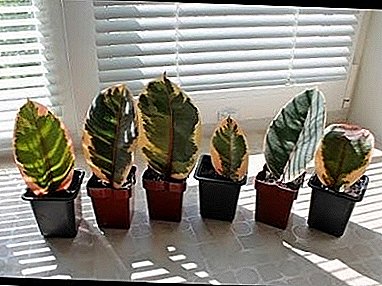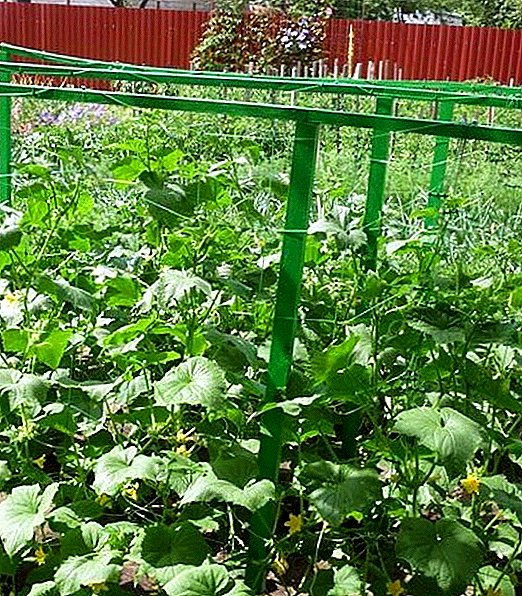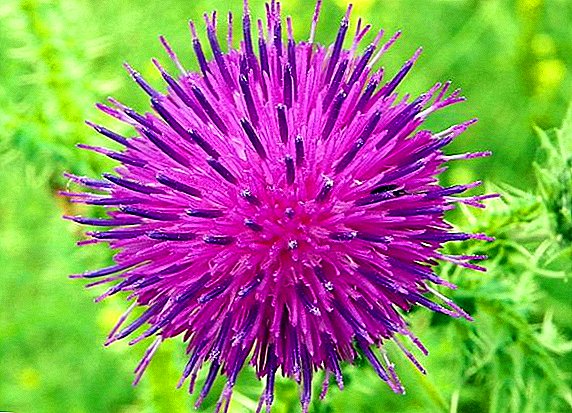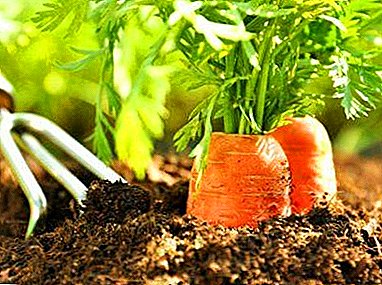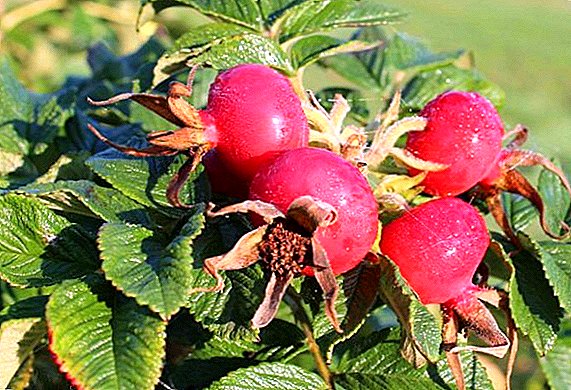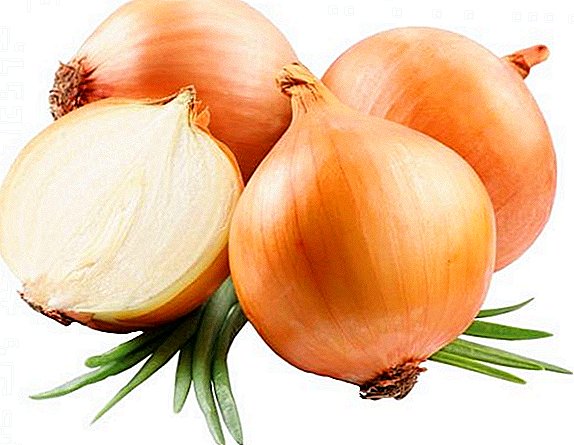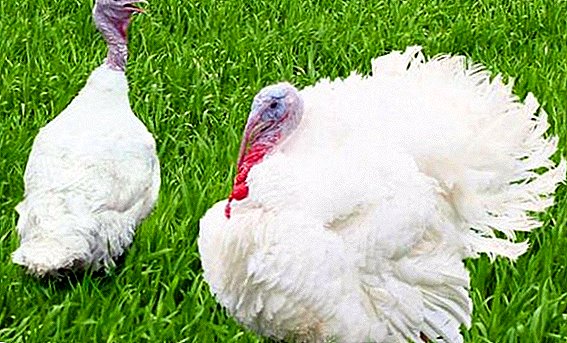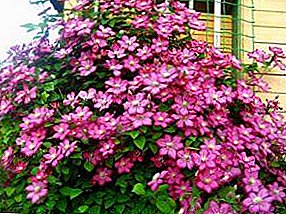
Clematis - This is one of the most sought-after garden crops.
Many breeders of the world are trying to bring new varieties, because this plant ennobles even the most unfortunate landscape design, captivating everyone around at the time of its flowering.
The market offers clematis varieties is very large, but the price is high. Most often, if you acquire a varietal clematis, then you hope to multiply it.
But it is not recommended to do this with the help of seeds, since the quality of the plant is lost, therefore this method is practically not used.
For fruitful cultivation and reproduction, you must take into account the requirement of this culture to environmental conditions. This plant prefers sunny places, without drafts.
The soil is favorable loamy, slightly alkaline or neutral, fertile, well-fertilized and loose. For clematis, acidic soils are not suitable. It should also be borne in mind that natural fertilizer clematis harms.
Three clematis pruning groups are described on our website.
Read here how to make support for clematis with your own hands.
See photos of clematis varieties: //rusfermer.net/sad/tsvetochnyj-sad/klematis/sorta.html
Clematis reproduction by cuttings
The fastest way to reproduce new shoots of a plant. It is necessary to proceed to grafting before flowering, since cuttings from flowering plants take root worse.
But at the same time it would not be bad to have time to procure cuttings from a plant with buds, because natural biostimulants are very active.
It can be done later on by cutting, but it will be less effective because the plants will take root worse.
The middle part of the shoot is most suitable for grafting, since the upper part usually does not have buds, and the lower part is too rigid and takes root due to this poorly. The best rooted cuttings with one node.
 To speed up the cuttings are treated with a solution for biostimulation of growth (root and others).
To speed up the cuttings are treated with a solution for biostimulation of growth (root and others).
As a place for rooting, you can use a greenhouse, greenhouse or a pot with a mixture of peat and sand.
Cuttings root better when scattered light, so it is better to use a special film that protects plants from overheating, but does not create a large amount of condensate.
You need to land at a distance of five centimeters and a distance of ten centimeters between the rows. Deepening the stalk 1-2 cm to protect the kidneys from drought.
Watering requires daily, and a month later, you can reduce watering up to 2 times a week. Rooted in about 50 days.
Till spring we leave in the greenhouse, having covered it for winter for thermal insulation of sawdust, in spring we plant it in prepared beds so that the green cuttings grow to the required size, and in the fall we transfer the plant to where it will grow constantly. Approximately 60 percent of all clematis planted rooted.
You can also try to use the method of spring cutting, for this around the middle of May shoots are planted in the shade, pinch the tops and cover with transparent glass packaging. By the fall, the cuttings already have a good root system.
Read also the specifics of planting and caring for clematis.
How to make a scarecrow with your own hands, learn by clicking on the link: //rusfermer.net/postrojki/sadovye-postrojki/dekorativnye-sooruzheniya/delaem-ogorodnoe-chuchelo-svoimi-rukami.html
Reproduction by layering
It is fairly easy to grow this plant from cuttings, but it takes a longer period of time.
There are several options for obtaining layers:
 1. Spud fertilizer bushes up to 2-3 leaves. It is necessary to eliminate the shedding of the soil, so it is customary to use special cylinders.
1. Spud fertilizer bushes up to 2-3 leaves. It is necessary to eliminate the shedding of the soil, so it is customary to use special cylinders.
After about a year or two, the plant will develop another root, with the help of which the shoots can be separated and planted elsewhere, while cutting the top to the second node.
2. The simplest method can be called horizontal layouts. It is best to do them in the fall or late spring. Near the base of the bush make a groove with a length of two meters and a depth of about 8 centimeters.
Escape is necessary to lay in it, while checking that the top with developed buds is on the surface. Otherwise, clematis will not germinate.
Such a layer requires careful abundant watering and well-spilled soil. The shoots with roots are separated in the fall or early next season, they are cleared from the ground, separated into individual bushes and transplanted to a permanent place of growth.
If the root is underdeveloped, then it is recommended to further grow it before planting.
Reproduction by dividing the bush
 A good way to reproduce both varietal and clematis - hybrids. It is used after 5-6 years of growing plants.
A good way to reproduce both varietal and clematis - hybrids. It is used after 5-6 years of growing plants.
Begin to divide the plants a month before frost or in the spring before the onset of budding. It is worth remembering that the plants divided in this way do not take root very well, so you need to fertilize the plant in time for a year so that new young roots form on the shoots.
Carefully dig up the bush without damaging the roots, shake off the excess land and divide the bush into several parts. Please note that each part has a kidney and a good root system. Use a knife if necessary.
Thus, you can get up to five plants that will delight you with flowers already in the first year.
Description of the best grapes, find on the website.
Varieties of table grapes: //rusfermer.net/sad/vinogradnik/sorta-vinograda/stolovye-sorta-vinograda.html
Seed propagation
Propagation by seeds is usually used for breeding new varieties. Hybrid varietal plants rarely retain their qualities, which is partly good)
Seeds vary in size: large from 6 to 8 mm, can sprout within 5 years. These include clematis with small flowers and some large-flowered ones.
 For clematis with smaller seeds with a diameter of 3 to 5 mm include six-petaled and other varieties.
For clematis with smaller seeds with a diameter of 3 to 5 mm include six-petaled and other varieties.
They remain viable for 3 years. The third group includes very small seeds, they sprout well, but are not durable in storage.
The best time to plant them is spring. Seeds need to be sown in open ground or pots. After the appearance of the first leaf, the plant needs to be planted in a shaded place. The next year we plant clematis in a permanent place.
Whatever method of reproduction of this beautiful plant you choose, we wish you success! Perhaps you will be able to bring a new variety and your site will delight you with beautiful flowers.


 Three clematis pruning groups are described on our website.
Three clematis pruning groups are described on our website. Read also the specifics of planting and caring for clematis.
Read also the specifics of planting and caring for clematis. Description of the best grapes, find on the website.
Description of the best grapes, find on the website.
